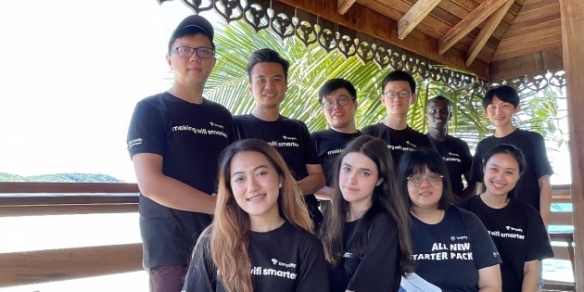Week in Review: Indonesia’s ecosystem gets a Block71 boost
By Karamjit Singh August 6, 2017
- Salim Group ties up with NUS to launch startups accelerator in Jakarta
- Is Material Design an important guideline for designers of apps and websites?
THE thriving startup ecosystem in Indonesia got another boost with the official launch of Block71 Jakarta this past week. This tie-up between NUS Enterprise, the entrepreneurial arm of the National University of Singapore (NUS), in partnership with Salim Group, aims to support innovation and entrepreneurship development in both Singapore and Indonesia, by being an ecosystem builder and global connector for Indonesia’s startup community while offering Singapore startups more connections into the Indonesian market.
It’s interesting that the facility will be located in Kuningan, which is described as a thriving area in Jakarta’s technology community. As this particular area gets more attractive for startups, it will be interesting to see if Jakarta’s startup community will be keen to move to the Digital Hub that Sinar Mas Land, a rival conglomerate to the Salim Group, is building at Bumi Serpong Damai (BSD), South Tangerang.
For sure this move will just impel Sinar Mas Land and its CEO, Michael Widjaja to raise the bar in the smart hub that they are building as they know they have a real battle on their hands to pull the startup community and its supporting ecosystem to their part of the woods in the Greater Jakarta metropolis.
That competition between the established startup hub and the challenger hub will naturally be good for the ecosystem and Indonesian entrepreneurs.
Also good for Indonesia’s enterprise tech ecosystem is the entry of smaller tech vendors into the market. In the latest case, we have Taiwanese-based manufacturer of network-attached storage (NAS), Synology Inc, entering the market via distributors. It always starts that way with smaller vendors but once the market forms for their products they will open a direct presence and that helps with market awareness of the vendors products. In the case of Synology, it is targeting the large Indonesian SME market. I am sure many other smaller tier vendors will be entering the market as well.
Over in Malaysia, my colleague Anushia Kandasivam wrote an interesting piece about material design and whether designers of apps, websites really need guidelines to help them create that ideal mesh between UX and UI.
Apple thinks so and has long stood by its iOS Human Design Interface Guidelines that it set out years ago inform the look and feel of all iOS software, standardising them across the board for use with the numerous varying Apple hardware.
Google only started following suit recently with its own design language called Material Design in late 2015. According to Google, these material design guidelines are meant to “create a visual language for our users that synthesises the classic principles of good design with the innovation and possibility of technology and science”.
I am betting most of us have never given two seconds of thought to this matter. But Anushia’s article will be a good primer for you to understand this space better.
With that, I wish you a restful weekend and a productive week after.
Editor’s Picks:
Philips uses the power of AI to save lives
Not all heroes wear capes in today’s digital economy
Synology dives into Indonesian market
NUS Enterprise, Salim Group to launch Block71 Jakarta


